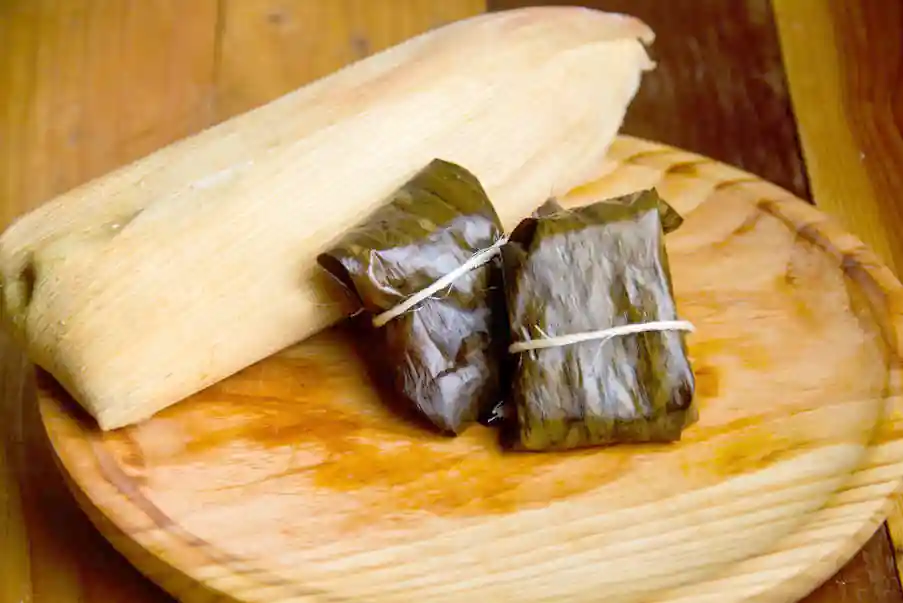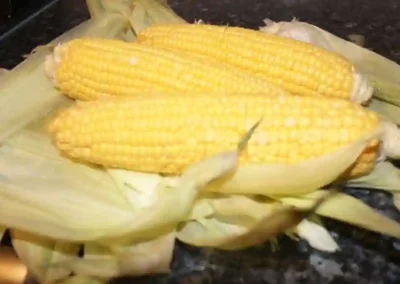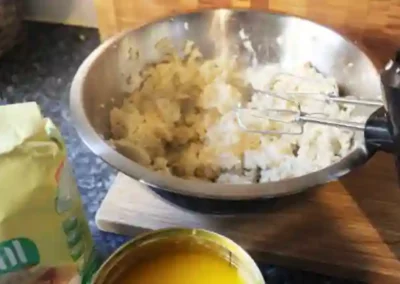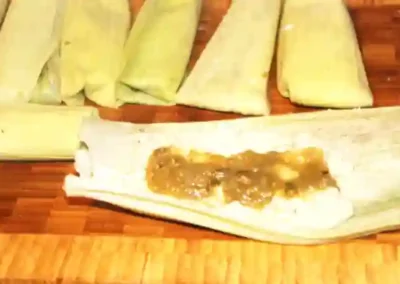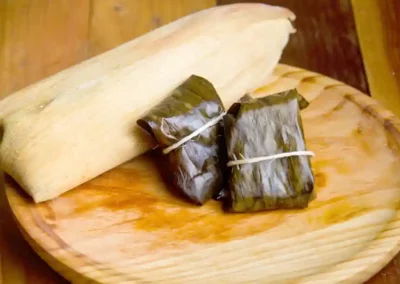Tamales are corn dumplings, filled with beans and a variety of vegetables, as well as meat, fish, and even insects and their eggs, all wrapped in corn husks, or in more tropical regions plantain or avocado leaves, then cooked in a variety of ways.
There are savoury and sweet tamales, filled and unfilled (blind), open (unwarapped) and closed, steamed, boiled, roasted, fried, even fermented tamales. The range is potentially endless
Tamales most likely originated in modern-day Mexico and Guatemala, quickly spreading to all of central and south America. The main difference between pre-hispanic and modern-day tamales is the use shortening. The addition of pork or vegetable fats was introduced by the Spanish to make a lighter, fluffier, and rather more hearty dough
Historically, home-made tamales are associated with special occasions such public holidays and large family events. In Mexico they are eaten at breakfast from street sellers in practically every corner of large towns and cities. They are traditionally accompanied by the corn-based prehispanic drink atole.
Many varieties exist both within and beyond Mexico under different names, from paches, chuchitos, and nacatamal, to corunda, zacahul, hallaca and more!
Understanding The Key Ingredients For The Perfect Masa
The basic ingredient for tamales is nixtamal – corn which has been treated with an alkali solution, most commonly slaked lime, though wood-ash (potash) is sometimes still used in the most traditional communities
There are just four key ingredients to creating the perfect tamal masa, or dough:
1. Nixtamalized Corn: The foundation of any tamal is the masa dough,
Instant masa harina is undoubtedly the quicker quicker and gives great results. Use masa harina for tamales, which is more coarsely ground and will give you the best texture
That said, tamales may be made quite easily at home from dried corn using a simple food processor. Tamales from scratch may take just a little longer, but if you want to experience the full and authentic flavour of nixtamal there is nothing to rival it
2. Shortening: as with pastry, the addition of fat creates a lighter, fluffier texture. While traditional tamales call for pork lard, we’ll use any mixture of butter / vegetable shortening / oil for a vegetarian-friendly option.
Remember, pre-hispanic people did not use shortening in their tamales. Feel free to experiment with the quantities of fat until you reach a happy balance of texture and calories
3. Liquid: While a good quality vegetable stock or broth will undoubtedly enhance the flavor of your masa, you’ll also get great tamales using simple water
4. Salt: A pinch of salt is essential to bring out the flavors in the masa. If your stock contains salt you may not need to season your dough further. If you;re using plain water add just enough to please your palate
UK sources for masa for tamales include
- coolchile.co.uk
- mexgrocer.co.uk
Step-By-Step Guide To Preparing The Masa
Using Dried Whole Corn Or Hominy
1. Place the corn kernels in a pan with sufficient water to cover with of a teaspoon of slaked lime.
2. Bring to a boil, and simmer for about 15 minutes.
3. Transfer the corn and lime solution to a non-metal bowl, cover and leave overnight.
4. The following morning rinse the corn thoroughly under the tap (faucet for you Americans) until water runs clear. Your nixtamal is ready for grinding
5. Grind the softened corn kernels in a food processor, maintaining a softly grainy texture
5.a. Alternatively grind the corn using a hand corn mill to a similar consistency
5.b. Continue the steps outlined in making masa para tamales below
Using Instant Masa Harina
Combine the masa harina and salt in a bowl and mix well
Make The Tamal Masa
Combine the cornmeal and salt in a bowl, mixing well
5. Add the shortening to the cornmeal mixture. Use your fingertips or a pastry cutter to cut the fat into the cornmeal until it resembles coarse crumbs
6. Gradually add the stock or water into the cornmeal mixture, stirring continuously. Keep adding liquid until the masa reaches a soft and spreadable consistency like soft mash potatoes. The exact amount of liquid needed may vary, so add it gradually to avoid a runny masa
Tips For Achieving The Ideal Texture
When it comes to making tamales, achieving a perfect masa consistency is key. The masa, a dough made from ground corn, is the foundation of every tamal. It should have a light and fluffy texture that melts in your mouth. Here are some tips to help you achieve the ideal consistency for your masa:
1. Choose the corn: Start by selecting the right type of corn for your masa. Traditionally, tamales are made with dried field corn, also known as dent corn. This type of corn has a high starch content, which gives the masa a smooth and creamy texture. You can find dried field corn at specialty stores or online.
2. Nixtamalize the corn: the process of nixtamilzation is unique to pre-hispanic American societies. This process of steeping corn in an alkaline solution breaks down to outer husk to release the grain’s protein and, crucially, vitamic D3 (Niacin). The process also releases and enhances the corn’s flavour as well as softening the kernels, making them easier to grind.
Cook and soak the corn in a dilute solution of slake lime / whitewash or Calcium Hydroxide (Ca(OH)2)
3. Grind the corn: Once the corn is soaked, drain the water and transfer the kernels to a food processor or a hand corn grinder.
The corn grinder crushes rather than cuts the kernels, reputedly yielding a better, creamier texture. While I think this is essential when grinding corn for tortillas, tamal dough requires a coarser texture and the food processor works just fine
Grind the corn to achieve a slightly grainy texture. Avoid over-grinding, as this can result in a dense and heavy masa
4. Mix the masa: In a large mixing bowl, combine the ground corn with other ingredients such as lard, salt, and baking powder. The masa should be soft and pliable, but firm, something like soft mashed potatoes
5. Beat the masa: though not essential, it aerates your dough to produce a lighter texture. Some recipes call for beating the fat. I get better results from beating the dough. You can use a wooden spoon to beat the mixture briskly and thoroughly. Or do yourself a favour and use an electric whisk or food processor
5. Float test the masa: To ensure that your masa has the right consistency, perform a simple test. Take a small piece of masa and drop it into a glass of water. If the masa floats, it’s light enough and has the perfect consistency. If it sinks, try resting the masa 15-30 minutes If it still sinks try adjusting the ingredients: add more liquid, or fat, or raising agent according to your judgement
Now that your masa floats you’re ready to explore all the different options for preparing and filling your tamales
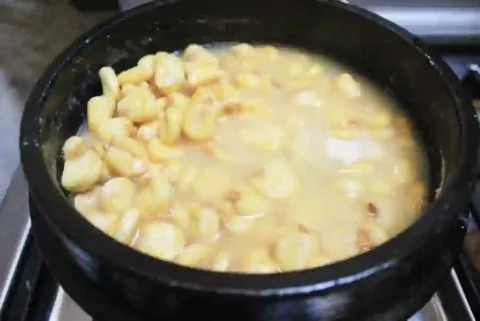
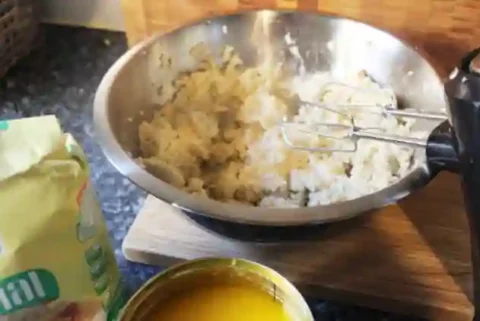
Filling Options and Variations for Tamales
Tamales offer endless possibilities when it comes to cooking and fillings.
There are
- steamed, boiled and baked tamales
- sweet, savoury, and even sour tamales
- open and closed tamales
- filled and “blind” tamales … and more
Here are a few veggie / vegan options to whet your creative appetite:
- Cheese and Jalapeno: If you’re looking for a vegetarian option, cheese and jalapeno tamales are a delicious choice. Mix shredded cheese with diced jalapenos for a spicy and gooey filling
- Tamales Verdes: green tomatillo salsa is delicious with a meaty substitue like seitan or fu, or a melty, but firm cheese like Oaxaca cheese or Cypriot Halloumi
- Tamales Rojos: use red tomato (jitomate) sauce. They are delicious with the accition of smoky chipotle
- Tamales Agrios: originating from the Mexican state of Michoacán sour tamales use fermented tamal masa with a bean paste filling srolled roly-poly style
- Open tamales are rather like a tamal pizza using a baked masa base with a tomato-based sauce, chees(es) and any variety of veggy toppings
- Sweet Tamales: For a dessert option, consider sweet fillings like cinnamon-spiced apples, chocolate, or sweetened cream cheese. These tamales are a delightful treat for any occasion
Feel free to get creative and experiment with different fillings. Remember, the filling should complement the masa and add an extra layer of flavor to your tamales.
Subscribe To Posts
Subscribe To Posts

